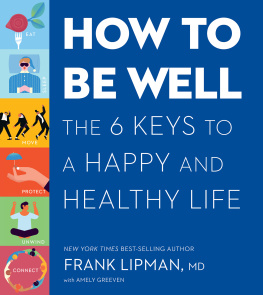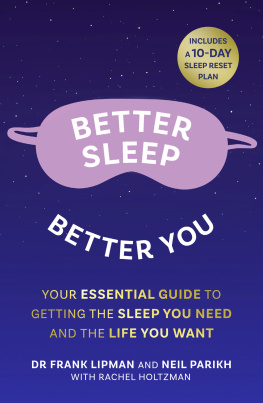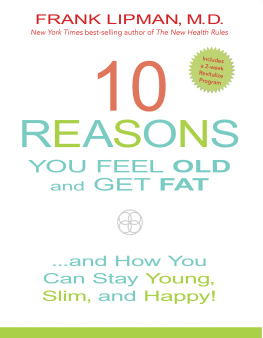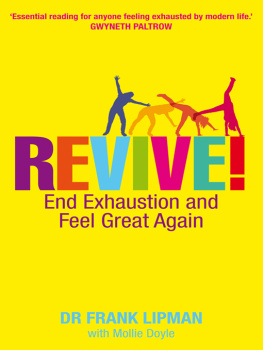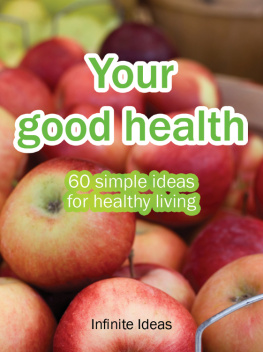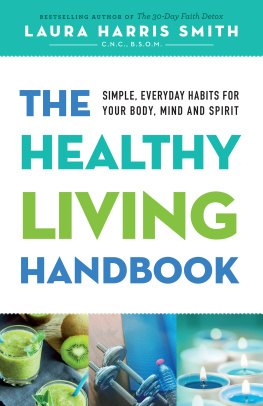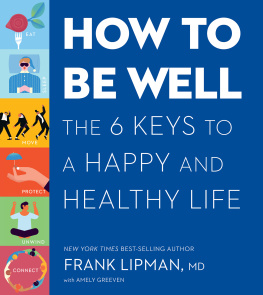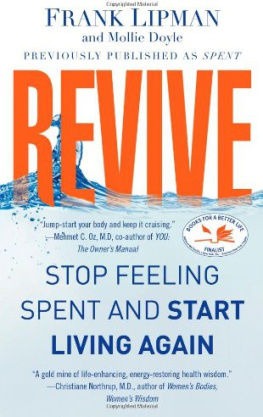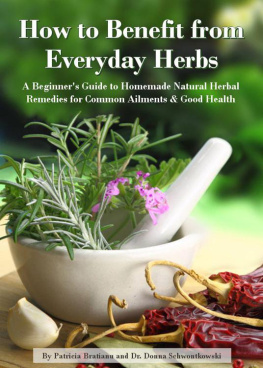
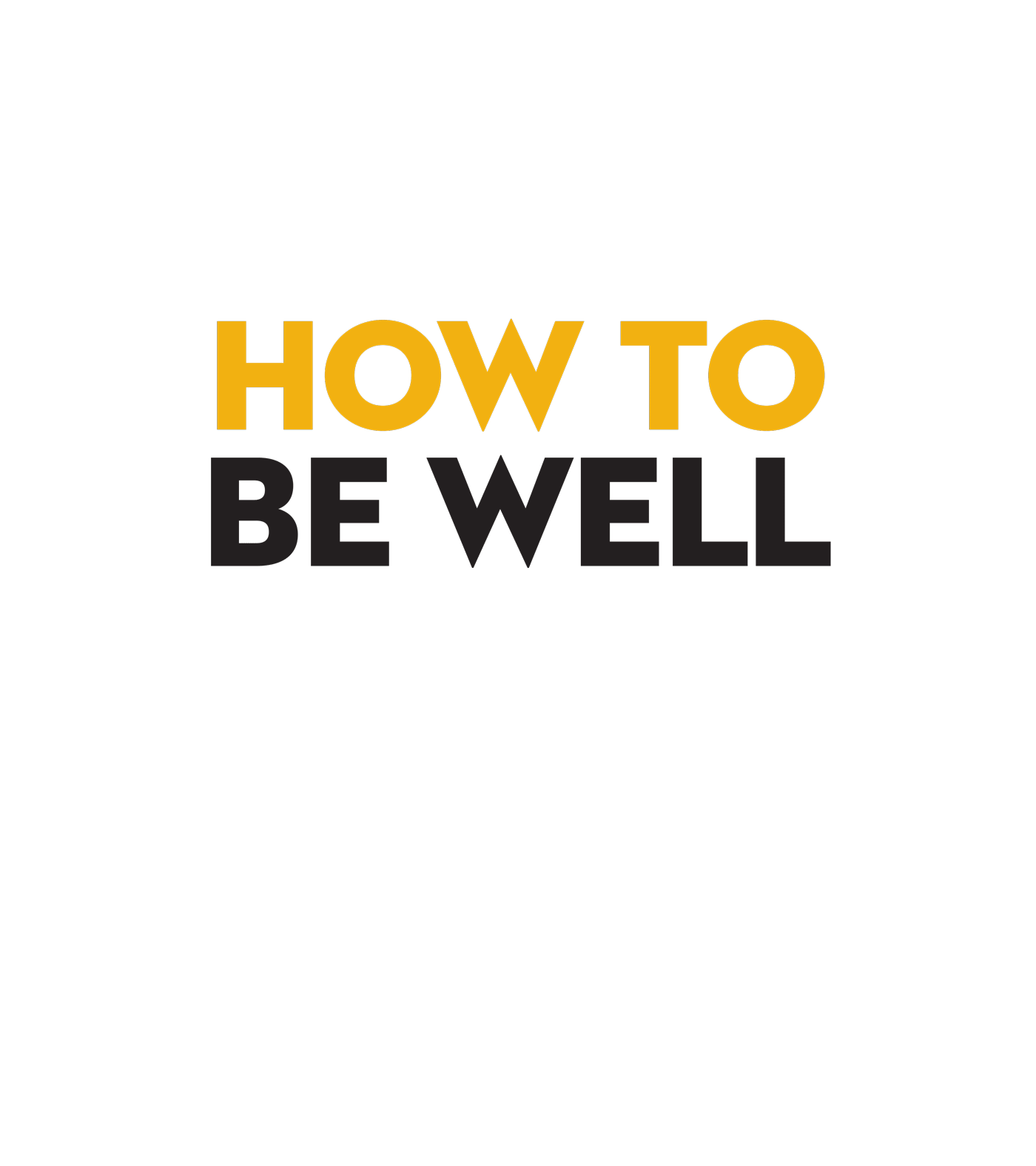
Coyright 2018 by Frank Lipman
All rights reserved.
For information about permission to reproduce selections from this book, write to trade.permissions@hmhco.com or to Permissions, Houghton Mifflin Harcourt Publishing Company, 3 Park Avenue, 19th Floor, New York, New York 10016.
hmhco.com
Library of Congress Cataloging-in-Publication Data is available.
ISBN 978-1-328-90478-2 (hardcover)
ISBN 978-1-328-90507-9 (ebook)
Book design by PG&Co
Illustrations by Giacomo Bagnara
v1.0318

Contents
Eat
Sleep
Move
Protect
Unwind
Connect
What to Do When...

Introduction
You are holding in your hands a field guide to being well in an increasingly unwell world. This book is a little different from other health books out there. In its pages you wont find a strict doctrine on diet or a Spartan three-week boot camp for instant transformation. Instead, this is a handbook filled with the everyday habits and practices you can deploy to launch a healthy lifestyleor to sustain it, or even master it, depending on where you are starting from and your level of expertise. Just like a wilderness guide is used by novice and seasoned nature-lovers alikethe first-timer needs tips on erecting a tent, the pro needs a primer on rappellingHow to Be Well is a manual of the essential skills that anyone can use to navigate safely and smoothly through the wild terrain of wellness today. It is designed to accompany you on the journey of your life and become dog-eared with use.
And it is a wild world we find ourselves in today. I have been a doctor for more than thirty-five years, and never have I seen people feeling as tired and sick, at such young ages, as I see now. I have never felt such a surge of profit-driven interestsBig Food, Big Pharma, and Big Techshaping the ways we eat, think, and treat our bodies and minds. In addition, the number of brands and products promising to deliver better health is dizzying. If you are a health-seeker, finding your way through this crowded landscape of information, misinformation, and glittering promise can feel disorienting. You might want to take the right steps to stay well and energized and avoid the decline you are being told is inevitable as you age. You might want to resolve chronic symptoms, or get a handle on weight issues, or better your state of mind. But knowing the direction to start walking can be confounding, and having the time or energy to figure it out in the midst of a busy lifewho has that? More and more, my patients want less talk and more action. They say, Just tell me what I need to do!
What Ive observed is that the people who are most successful at achievingand then maintaininga healthy lifestyle, and who have the highest levels of vitality, resilience, and longevity, have found their way through this landscape thanks to two things: They have guides and mentors they turn to who give them the information and inspiration they need to adopt small, meaningful habits. And they make changeaccording to their own needs, interests, and natures, incrementally building their strong and long-lasting house of health.
How to Be Well is designed to give you the same ongoing guidance. Its purpose is simple: to help you build and maintain your resilient house of health, one that can weather the storms of modern living, that you enjoy inhabiting, and that is uniquely your own, constructed your way. In an era when many people say their primary care provider wouldnt recognize them on the street, this book exists to put responsibility and power firmly into your own hands. Today, more than any time in recent decades, the primary care provider is you.
The Good Medicine Philosophy
Before we go any farther, lets think positive. Despite the alarming state of chronic illness in America (and most other industrialized nations), despite the very rocky and vulnerable state of our healthcare system and the prevailingand bank-breakingnotion that more medicine is better when it comes to fixing problems, we are actually in the middle of a revolution. We are waking up to the much bigger and broader picture of how to be well, and that is what you will find in this book. I began my career as a traditionally trained MD in my native South Africa, then studied Chinese medicine in the U.S. I became an adopter of functional medicine and was an early practitioner of implementing gut repair and detoxification to address two frequent root causes of illness, which were getting overlooked. Today those components merge under an umbrella that I officially term integrative medicine, but what I mainly call, quite simply, Good Medicine.
Good Medicine uses a wide and inclusive aperture to look at the state of your body and mind, and it looks for fundamental causes of weakness and imbalance before throwing drugs and medical interventions at a problem. It asks lots of questions: What are you eating? How are you sleeping? Do you wake up each day raring to go? How sedentary is your work day? Who cares about you, and how do you feel when youre alone? The elements that either create good health or deplete it are largely the very ordinary parts of lifeour food, rhythms, environment, and relationshipsand they all interrelate, all the time. Health or disease is almost always multifactorial in cause and is typically the outcome of the small choices you make daily: You can eat the most pristine diet in the world, but if youre wound as tight as a drum or feel cut off from support, or you exercise until you drop each day, the easeful well-being you desire can elude you.
Good Medicine also sees health as a fluid entity, not a fixed state. That means that what works for you today might not work so well in five or ten years. Change is constant when it comes to your physical and mental state, and the way to ride those waves, and to truly be well, is to know yourself well. Good Medicine views you as an individual, the owner of a unique constitution metabolically, psychologically, and emotionally, not a one-size-fits-all machine that thrives on hard-and-fast rules. While there certainly are universal laws that apply to everyone with a human designeating lots of vegetables is nonnegotiable for nourishment, detoxification, and disease prevention, and sleep is essential for healing and repairhow you choose to implement those habits is a personal matter. Spinach or cauliflower; night owl or lark; rock climber or swimmeryou need to pick what works for your needs, tendencies, and tolerances so you can establish the habits that work for you and succeed at maintaining them. Furthermore, your physiological needs and personal preferences shift at different phases of your life or in response to changing circumstances.
What this all means is that to truly be well, you need to know you. Which is why How to Be Well is designed to make you the author of your health story. It does this by ditching the linear follow this program approach that insists that every single person must do the same sequence of step A, then step B, then C, and that focuses on only one aspect of wellness. Instead, it offers you a new map for a new medicine, one that is not linear at all but circular.
Next page
